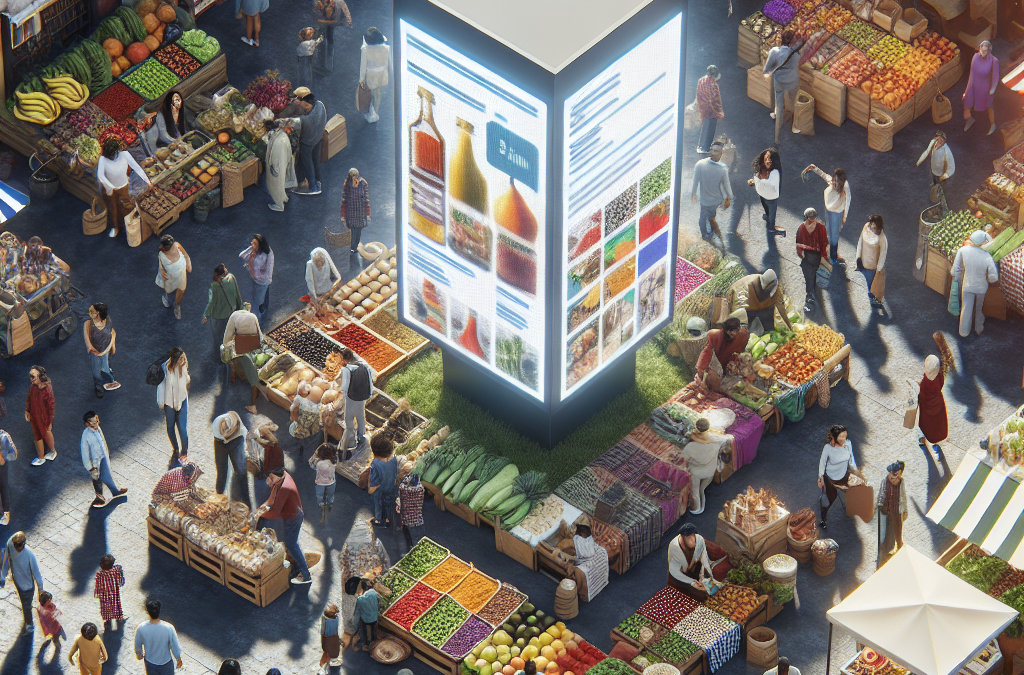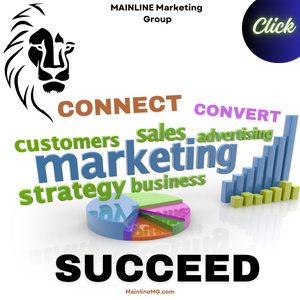Understanding Your Local Audience
Who Are They?
When I first started diving into local marketing, I quickly realized that understanding my audience was paramount. It’s essential to know who your local customers are—what they like, what they want, and how they communicate. What I found effective was tapping into local demographics, psychographics, and behaviors. By analyzing these factors, I could tailor my marketing messages to be more relevant and engaging to them.
For instance, if your local crowd is composed of college students, they might be more influenced by social media trends than older generations. Once I identified my audience’s core traits, it became easier to connect with them in meaningful ways, whether through social media or on-the-ground events.
Using tools like surveys or even just casual conversations can provide invaluable insights about your audience. Trust me, getting to know your customers personally can foster loyalty that translates into lasting business relationships.
Meeting Needs Within the Community
Recognizing the specific needs and pain points of your local audience can set you apart from the competition. I remember the time I noticed a lack of healthy food options in my area. By responding to that need, I was able to not only serve my community better but also carve a niche for my business that no one else was filling.
Finding ways to meet local needs creates a more engaged customer base. It also establishes you as a resource in the community that goes beyond just profit. This way, you’re seen as a local leader—someone who genuinely cares about improving the neighborhood.
Be active in local conversations and keep your finger on the pulse of community needs. Adjusting your offerings or services to fill gaps can turn one-time customers into regulars and advocates for your brand!
Cultural Relevance and Connection
One of the coolest things about marketing locally is the ability to connect culture. Each community has its unique vibe, traditions, and events. I’ve found that tapping into local culture not only resonates with people but makes your business much more relatable.
Celebrating local events, whether it’s hosting a promotion during a festival or collaborating with local artisans, is a great way to show that you’re invested in the community. I’ve had experiences where simply aligning my brand with local happenings led to a significant uptick in customer engagement and sales.
Moreover, don’t shy away from incorporating local vernacular or humor in your marketing messages. This form of authenticity builds trust and rapport and sets the stage for a solid community connection.
Leveraging Digital Platforms
Choosing the Right Channels
In this digital age, knowing which platform to focus on can save you heaps of time and energy. I’ve experimented with various channels—social media, email marketing, and even local SEO—and learned that understanding where your audience hangs out is key!
For instance, if you’re in a community that thrives on Facebook, it makes sense to invest time there. Similarly, if younger demographics are your target, platforms like Instagram or TikTok can work wonders. Invest time researching where your demographic frequents online and direct your efforts there.
Your goal should be to create a seamless presence where your customers feel comfortable interacting with your brand. Each channel has its own vibe, so tailor your content accordingly to resonate best with your audience.
Engagement is Key
Engagement isn’t just a buzzword; it’s a necessity. I remember when I launched a local campaign, I made it a point to interact with the community—replying to comments, sharing user-generated content, and even asking for feedback. This kind of active engagement showed that I valued my customers’ opinions and, in return, they felt more connected to my brand.
In today’s world, people want more than a transactional relationship; they crave connection. Hosting digital events like Q&As or challenges can invite participation and build a sense of community around your brand.
Don’t overlook the power of storytelling to humanize your business too! Sharing your journey, your staff stories, or customer success experiences fosters a deeper connection and makes your brand more relatable.
Maximize Visibility with Local SEO
When I first heard about local SEO, I thought it was an elusive concept best left to tech wizards. However, I quickly learned that it’s an essential component of digital marketing, especially for local businesses. Implementing local SEO strategies has helped me reach potential customers actively searching for what I offer.
I recommend focusing on Google My Business, local directories, and optimizing your website for local keywords. This ensures that when someone searches for a service in your area, your business shows up right where it needs to be: in their faces!
Additionally, encourage happy customers to leave reviews. Positive reviews enhance your credibility and can significantly impact your business visibility in local search results. Trust me, nothing beats the SEO magic created by genuine community testimonials!
Building Community Relationships
Networking with Local Businesses
When I first ventured into local marketing, collaborating with other small businesses opened up a whole new realm of possibilities. Networking with local folks not only creates a sense of community but helps expand your reach and customer base. I’ve found partners in local events, cross-promotions, and even co-hosted workshops.
This strategy reinforces the idea that we’re all in this together. By supporting each other, we foster a healthy business ecosystem where everyone can thrive. Plus, customers love to see local businesses collaborating!
Joining local chambers of commerce or community groups can amplify your reach and offer beautiful networking opportunities, blending seamlessly into the local landscape.
Participating in Community Events
Getting involved with community events is a game-changer. I vividly recall the excitement of setting up a booth at a local fair; it wasn’t just about selling my product but hitting that personal level with potential customers. Be present, be engaged, and people will notice your dedication to the community.
Whether it’s sponsoring a local sports team or attending charity events, participating opens doors for authentic conversations. Plus, it shows that you’re not just another faceless business but a valued member of the community.
Volunteering your time or resources demonstrates genuine care, helping you build goodwill which, in turn, pays off in customer loyalty!
Creating Loyalty Programs
A great way to strengthen community relationships is through loyalty programs. I implemented a points-based system where customers feel rewarded for supporting my business—and the feedback was phenomenal! It not only encouraged repeat business but made customers feel like they were part of something special.
Designing loyalty programs tailored to local interests is also an excellent way to engage your audience. For example, offer special discounts on local holidays or create exclusive events for loyalty members. The more you make them feel included, the more likely they are to spread the word and invite others into your community!
I’m a firm believer in showing appreciation for loyal customers; a simple ‘thank you’ can go a long way in cultivating a supportive local following.
Measuring Success in Local Marketing
Setting Clear Goals
Measuring success isn’t just about sales numbers; it’s about having clear goals. When I got serious about local marketing, I started by defining what success looked like for my business. Was it increasing foot traffic? Building brand loyalty? Or perhaps boosting online engagement? Setting these goals laid the foundation for everything I did moving forward.
By having clear objectives, I knew which metrics to measure. This practice helped refine strategies and adapt my approach based on what was working and what wasn’t. So, if something didn’t perform as expected, I would reevaluate and adjust, ensuring continuous growth.
Being flexible and ready to pivot based on metrics is crucial in the rapidly evolving digital landscape!
Using Analytics Tools
Analytics tools can feel overwhelming, but trust me, they’re invaluable. I started small, just focusing on Google Analytics to track the visitors’ behavior on my website. Over time, integrating more tools helped me measure not only site traffic but engagement levels across different platforms.
They provide actionable insights that can steer your strategies. For example, I Learned which social media posts resonated the most and shifted my focus there. Following the data ensures that you’re investing time and energy where it counts! It’s all about being data-driven but also keeping the human touch in mind.
Don’t be afraid to dive into the analytics—stay curious! It’s amazing what you’ll learn about your customers and how best to serve them.
Adapting Strategies Based on Feedback
Finally, let’s talk about feedback. I can’t stress enough how crucial it is in shaping your success. Encourage customer feedback through surveys, social media polls, and direct comments. I’ve found that actively seeking feedback turns customers into stakeholders in your business journey.
Using their insights to adapt my strategies has been a game-changer. Whether it’s improving a product or changing hours of operation, listening to your audience’s voice resonates—it shows that you care. By creating an open feedback loop, you not only stay relevant but also foster a brand community.
This ongoing conversation keeps your business aligned with customer needs and helps improve satisfaction and loyalty across the board.
Conclusion
In conclusion, effective local marketing in the digital age is all about understanding your community and seamlessly connecting both online and offline. By engaging, building relationships, and leveraging digital tools, you can create a thriving local presence that resonates with your audience. Remember, it’s not just about sales; it’s about creating a community around your brand.
FAQ
1. What is the most important aspect of local marketing?
The most important aspect is understanding your local audience. Knowing who they are, what they want, and how they interact helps tailor your marketing efforts effectively.
2. How can I improve engagement with my audience?
Engagement can be improved by interacting regularly on social media, hosting events, and sharing stories that resonate with your audience. Always encourage feedback to create meaningful interaction.
3. How do I measure success in my local marketing efforts?
Success can be measured by setting clear goals, using analytics tools to track metrics, and adapting strategies based on feedback. It’s crucial to revisit your objectives continually!
4. Why is community involvement important for local marketing?
Being involved in the community builds trust and credibility. It shows customers that you care, which can translate into loyal relationships and brand advocacy.
5. What role does local SEO play in marketing?
Local SEO is essential in ensuring that your business appears in search results when local customers look for services you offer. It significantly boosts visibility and helps drive targeted traffic to your business.


